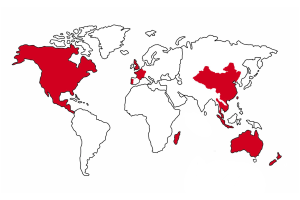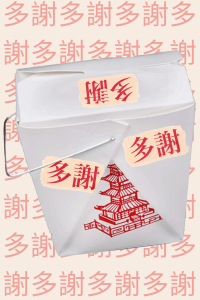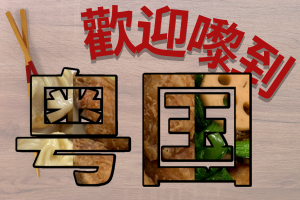Postcard 1: Recoloring the World Map

My first postcard is a recoloring of the world map. World maps typically delineate countries with distinct black borders and a color assigned to each country in order to differentiate them from neighboring countries. In my conceptualization of a Canton nation, I would propose a move towards deterritorialization. This would mean that a nation does not have to encompass a single shared territory, but can instead span various geographical spaces. For a Canton nation, this would allow for membership of the nation by diasporic populations and suggests a shift from territorially to culturally defined countries, which ultimately makes space for considerations of the world’s volatile geographic makeup.
Sources:
“Cantonese Around the World”, https://www.cantonese.sheik.co.uk/essays/cantonese_around_the_world.htm.
“Introducing The Top 4 Cantonese-Speaking Regions”, https://ling-app.com/yue/cantonese-speaking-regions/.
“Cantonese language”, https://www.britannica.com/topic/Cantonese-language.
Postcard 2: 多謝

I chose the take-out box as a symbol of the Cantonese populations that emigrated to different parts of the world. In the US in particular, the first Chinese restaurant, Canton Restaurant, was established in 1849 (Liu 2015, 1). Now, with more than 40,000 Chinese restaurants in the country, Chinese restaurants have flourished and are an integral part of the American food market (Liu 2015, 5).
My main goal with this postcard was to question the term “Chinese” that has been used ubiquitously in reference to anyone from Greater China, the diaspora, or as an umbrella term for anyone belonging to an ethnic group that is or was considered a part of China. Intentional or not, the labeling of Chinese has subsumed more nuanced understandings of various Chinese ethnic identities. By pasting the traditional Cantonese characters for thank you over the English text normally printed on these boxes, I hope to highlight the Cantonese origins of much of the food that we nowadays just consume as Chinese food.
Sources:
Liu, Haiming, and Huping Ling. “Introduction.” In From Canton Restaurant to Panda Express: A History of Chinese Food in the United States, 1–7. Rutgers University Press, 2015. http://www.jstor.org/stable/j.ctt16nzfbd.5.
Image from https://www.amazon.ca/Chinese-Boxes-PAGODA-Fold-Pak/dp/B00LBA2OUW
Postcard 3: 歡迎嚟到粤国

歡迎嚟到粤国, meaning Welcome to Canton, borrows from popular “Greetings from” American travel imagery. Many of these postcards exhibit images that are associated with place-specific attractions. This third postcard borrows from my own personal association I’ve made with food and Cantonese culture, so I used photographs of my favorite Cantonese foods as representative photos of Canton. The materiality of souvenirs such as this style of postcard can legitimate claims to nationhood; thinking about banal nationalism and the ways in which it draws our attention to “the ubiquitous ways for the state to instill the boundaries of ‘our country’” (Ichijo 2020, 216) and the mentality to prioritize them without resorting to the use of violence,” the use of these postcards both establishes as in-group and out-group (welcoming tourists to our nation) while also staking claim over certain attractions (in this case food) as belonging to us.
Sources:
Ichijo, Atsuko. “Food and Nationalism: Gastronationalism Revisited.” Nationalities Papers 48, no. 2 (March 2020): 215-223. doi:https://doi.org/10.1017/nps.2019.104.
Icon and background from Canva.
